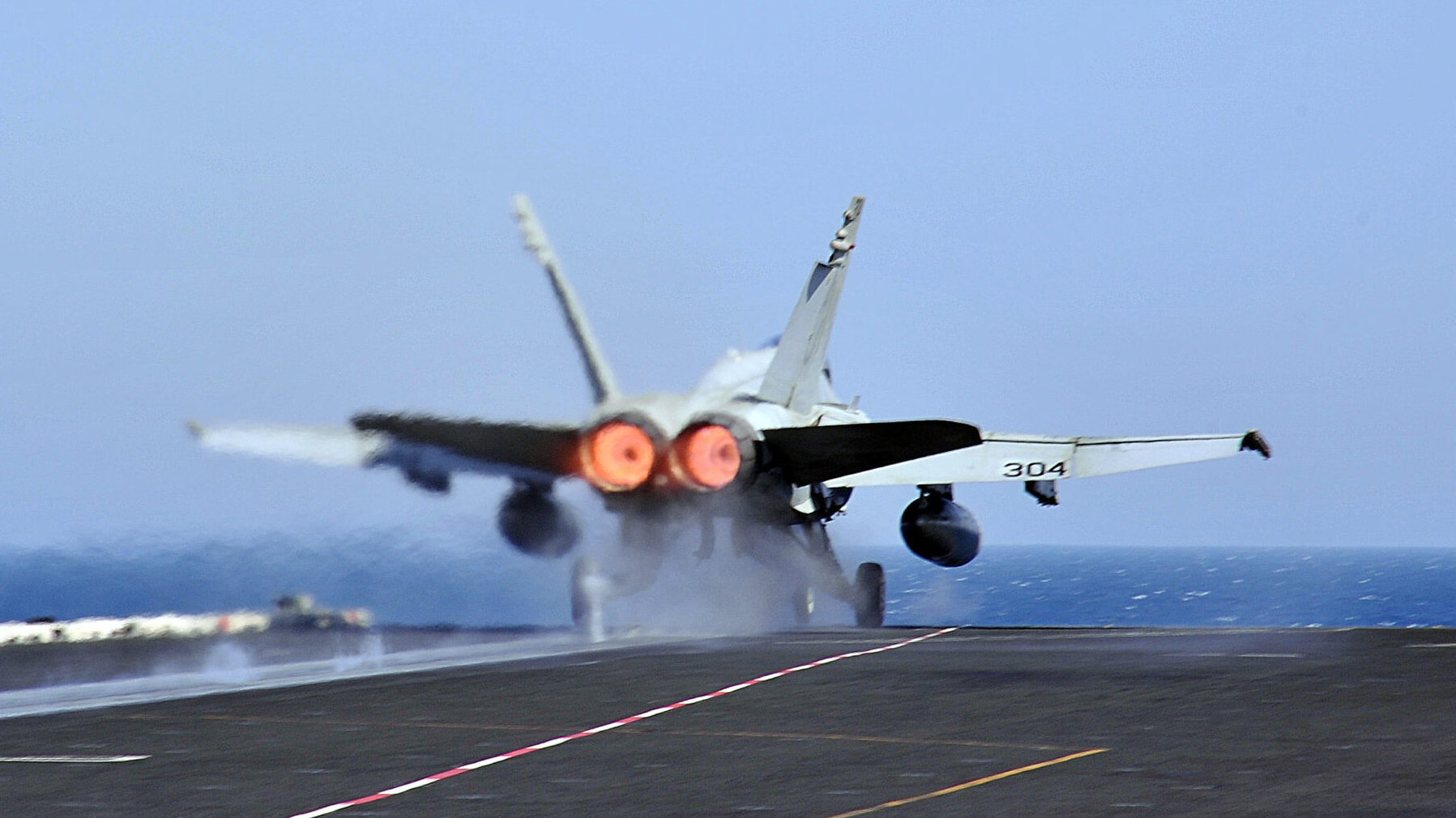
An F/A-18C Hornet, attached to the “Valions” of Strike Fighter Squadron (VFA) 15, launches off of the flight deck of the aircraft carrier USS George H.W. Bush (CVN 77). George H.W. (U.S. Navy photo/Margaret Keith)
WASHINGTON: Aircraft availability and flying hours in the Navy, Marine Corps and Air Force have seen a “marked decline” over the past two decades, with the most eye-catching drop driven by the Navy’s legacy Hornet fleet, a new analysis finds.
“In general, fleetwide availability rates have declined for both services, but they have declined more for [the Department of the Navy]. Average annual flight hours per aircraft have followed a similar trend,” according to a Congressional Budget Office analysis of the services’ aviation statistics since 2001.
“Both the Air Force and DoN experienced declines in the number of flying hours per aircraft and a sharper decline during the pandemic,” the report continues.
Availability rates are the metric used to represent how many aircraft were available for flight, while flying hours indicates the amount of flight that occurred.
One of the sharpest declines, CBO noted, was the Navy’s fighters and attack aircraft, an issue lawmakers have repeatedly raised during public hearings in recent years. The problem prompted former Navy Secretary Richard Spencer in 2018 to begin a new effort, dubbed the Naval Sustainment System, which sought to bring in best practices from commercial aviation maintenance facilities to help improve the service’s depots.
“Since 2012, the availability rates of DoN’s fighters and attack aircraft have fallen well below the Air Force’s rates. The rates for both services have been lower than they were in the early 2000s,” according to CBO.
Auditors write that the decline was driven by “considerable delays” in completing “high flight hour inspections” for F/A-18C/D Hornets, which include both an inspection as well as various other actions meant to extend the aircraft’s operating life.
CBO also paid particular attention to flight trends during the pandemic. In general, auditors found that while availability increased in both the Air Force and Navy, overall flying hours for both services declined. “[T]he Air Force’s decline was proportionally greater,” CBO adds. In April 2020, the Air Force flew 69% as many hours as it did pre-pandemic, while the Navy flew 81% of its typical hours, according to the report.
“With the services flying fewer hours, more spare parts may have been available to complete maintenance, increasing the number of aircraft that were available. Or fewer flying hours may have reduced the chances that available aircraft would experience problems and need repairs,” according to auditors.
The report notes that its estimates differ from the Pentagon’s because of differences in the way aircraft are counted. CBO counts planes that are in depot-level maintenance or storage as being unavailable, while the Defense Department only measures availability of aircraft located in operational squadrons.
In other words, if the Pentagon moves inoperable planes from squadrons to depot maintenance, it can artificially boost the department’s aircraft availability statistics because the same number of aircraft would remain unusable.
The non-partisan watchdog produced the Jan. 5 report in response to a request from lawmakers on the House Armed Services Committee.






















